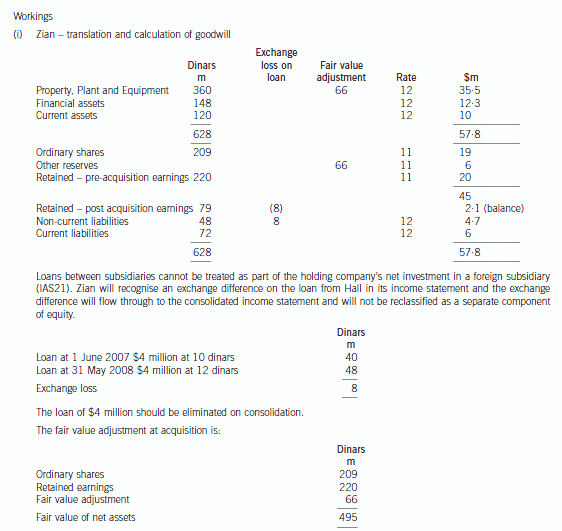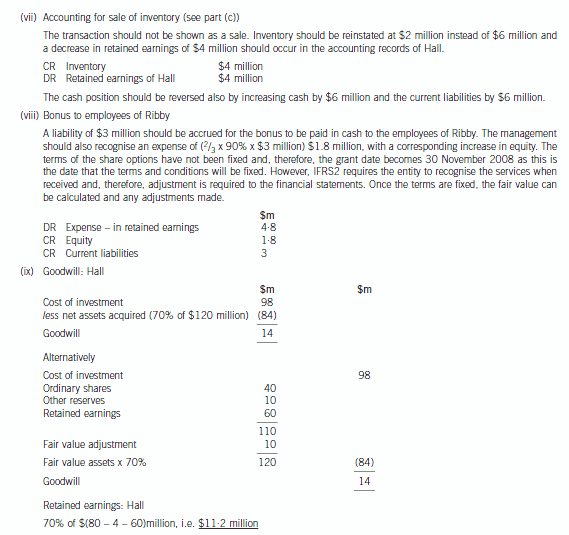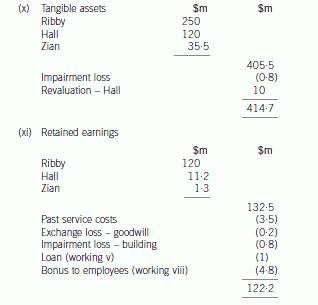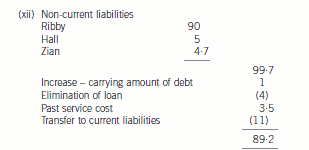ACCAF1考试-会计师与企业(基础阶段)章节练习(2020-10-09)
发布时间:2020-10-09
各位考友注意了,今日51题库考试学习网为大家带来ACCAF1考试-会计师与企业(基础阶段)章节练习题(3),快来检验一下自己的掌握程度吧。
1. What is an inferior good?
A A good of such poor quality that demand
for it is very weak
B A good for which the cross elasticity of
demand with a substitute product is greater than 1
C A good for which demand will fall as
household income rises
答案:C
2.Consider the price and demand for flower
vases. The price of cut flowers goes up sharply. Which of the following would
you expect to happen?
A The demand curve for flower vases will
shift to the left and their price will rise
B The demand curve for flower vases will
shift to the right and their price will rise
C There will be a movement along the demand
curve for flower vases and their price will go down
D The demand curve for flower vases will
shift to the left and their price will go down
答案:D
3. Consider the price and demand for
tickets to travel by sea ferry. The price of travelling by hovercraft (a substitute
form of travel) goes up. Which of the following would you expect to happen?
A The demand curve for sea ferry tickets
will shift to the left, and their price will go down. More sea ferry tickets
will be sold.
B The demand curve for sea ferry tickets
will shift to the right, and their price will go up. More ferry tickets will be
sold.
C The demand curve for sea ferry tickets
will shift to the right and their price will go down. More sea ferry tickets
will be sold.
D The demand curve for sea ferry tickets
will shift to the right and their price will go up. Fewer sea ferry tickets
will be sold.
答案:B
4. The summer demand for hotel
accommodation in London comes mainly from foreign tourists. Demand for hotel
rooms in London in summer could be reduced by a fall in the price or value of
which of the following?
1 US dollars
2 Aeroplane tickets
3 Sterling
A Item 1 only
B Items 1 and 2 only
C Items 2 and 3 only
D Item 3 only
答案:A
5. ABC produces a variety of soft drink. It
has two competitors but all three producers use product differentiation to
distinguish themselves from each other. What type of market is this?
A Perfect competition
B Monopoly
C Monopolistic competition
D Oligopoly
答案:C
今天的试题分享到此结束,预祝各位小伙伴顺利通过接下来的ACCA考试,如需查看更多ACCA考试试题,记得关注51题库考试学习网!
下面小编为大家准备了 ACCA考试 的相关考题,供大家学习参考。
(b) (i) Advise Alasdair of the tax implications and relative financial risks attached to the following property
investments:
(1) buy to let residential property;
(2) commercial property; and
(3) shares in a property investment company/unit trust. (9 marks)
(b) (i) Income tax:
Direct investment in residential or commercial property
The income will be taxed under Schedule A for both residential and commercial property investment. Expenses can be
offset against income under the normal trading rules. These will include interest charges incurred in borrowing funds to
acquire the properties. Schedule A losses are restricted to use against future Schedule A profits, with the earliest profits
being relieved first.
When acquiring commercial properties, it may be possible to claim capital allowances on the fixtures and plant held in
the building. In addition, industrial buildings allowances (IBA) may also be available if the property qualifies as an
industrial building.
Capital allowances are not normally available for fixtures and fittings included in a residential property. Instead, a wear
and tear allowance can be claimed if the property is furnished. This is equal to 10% of the rental income after any
tenants cost (for example, council tax) paid by the landlord.
Income tax is levied at the normal tax rates (10/22/40%) as appropriate.
Collective investment (shares in a property investment company/unit trust)
With collective investments, the investor either buys shares (in an investment company) or units (in an equity unit trust).
The income tax treatment of both is the same in that the investor receives dividends. These are taxed at 10% and 32·5%
respectively (for basic and higher rate taxpayers).
Investors are not able to claim income tax relief on either interest costs (of borrowing) or any other expenses.
Capital gains tax (CGT):
The normal rules apply for CGT purposes in all situations. Property investments do not normally qualify for business
rates of taper relief unless they are furnished holiday lets or in certain circumstances, commercial property. Investments
in unit trusts or property investment companies will never qualify for business taper rates.
It is possible to use an individual savings account (ISA) to make collective investments. If this is done, income and
capital gains will be exempt from tax.
Other taxes:
New commercial property is subject to value added tax (VAT) at the standard rate, but new residential property is subject
to VAT at the zero rate. If a commercial building is acquired second hand as an investment, VAT may be payable if a
previous owner has opted to tax the property. If this is the case, VAT at the standard rate will be payable on the purchase
price, and rental charges to tenants will also be subject to VAT, again at the standard rate.
The acquisition of shares is not subject ot VAT.
Stamp duty land tax (SDLT) will be payable broadly on the direct acquisition of any property. The rates vary from 0 to
4% depending on the value of the land and building and its nature (whether residential or non-residential). Stamp duty
is payable at a rate of 0·5% on the acquisition of shares.
Investment risks/benefits
Direct investment
Investing directly in property represents a long term investment, and unless this is the case, investment risks are high.
Substantial initial costs (such as SDLT, VAT and transactions costs) are incurred, and ongoing running costs (such as
letting agents’ fees and vacant periods) can be significant. The investments are illiquid, particularly commercial
properties which can take months to sell.
All types of properties are dependent on a cyclical market, and the values of property investments can vary significantly
as a result. However, residential property has (on a long term basis) proven to be a good hedge against inflation.
Collective investments
The nature of collective investments is that the investor’s risk is reduced by the investment being spread over a large
portfolio as opposed to one or a few properties. In addition, investors can take advantage of the higher levels of liquidity
afforded by such vehicles.
(c) insider dealing. (5 marks)
(c) Insider dealing
Explanation of term
Insider dealing means using ‘inside information’ (i.e. price-sensitive information relating to the issuer of securities) to gain
advantage when ‘dealing’ (i.e. acquiring or disposing) in securities.
Ethical risks
Insider dealing is a potential area of conflict and contention for accountants in industry and commerce (i.e. employed
professional accountants) in particular (because of their exposure to price-sensitive information).
Acts of insider dealing contravene the fundamental principles of integrity and confidentiality:
■ integrity – a professional accountant should be honest;
■ confidentiality – a professional accountant should respect the confidentiality of information acquired during the course
of performing professional services and should not use or disclose it without proper and specific authority.
Professional accountants in public practice who become privy to price-sensitive information will similarly be in breach of their
duties of integrity and confidentiality if they get involved in insider dealing. Also, the reputation of individual practitioners and
their firms may be put at risk by allegations of insider dealing even though they have no involvement with the practice. For
example, if an auditor does not detect when an entity’s management is involved in insider dealing.
Sufficiency of current ethical guidance
Relevant current ethical guidance, that is covered by the principles of integrity and confidentiality, is sufficient to explain the
ethical risks of insider dealing but cannot prevent its practice. Even where there are laws to prosecute insider dealing,
penalties (such as seven years in jail and/or unlimited fines) have been ineffective in combating insider dealing.
2 The Information Technology division (IT) of the RJ Business Consulting Group provides consulting services to its
clients as well as to other divisions within the group. Consultants always work in teams of two on every consulting
day. Each consulting day is charged to external clients at £750 which represents cost plus 150% profit mark up. The
total cost per consulting day has been estimated as being 80% variable and 20% fixed.
The director of the Human Resources (HR) division of RJ Business Consulting Group has requested the services of
two teams of consultants from the IT division on five days per week for a period of 48 weeks, and has suggested that
she meets with the director of the IT division in order to negotiate a transfer price. The director of the IT division has
responded by stating that he is aware of the limitations of using negotiated transfer prices and intends to charge the
HR division £750 per consulting day.
The IT division always uses ‘state of the art’ video-conferencing equipment on all internal consultations which would
reduce the variable costs by £50 per consulting day. Note: this equipment can only be used when providing internal
consultations.
Required:
(a) Calculate and discuss the transfer prices per consulting day at which the IT division should provide
consulting services to the HR division in order to ensure that the profit of the RJ Business Consulting Group
is maximised in each of the following situations:
(i) Every pair of consultants in the IT division is 100% utilised during the required 48-week period in
providing consulting services to external clients, i.e. there is no spare capacity.
(ii) There is one team of consultants who, being free from other commitments, would be available to
undertake the provision of services to the HR division during the required 48-week period. All other
teams of consultants would be 100% utilised in providing consulting services to external clients.
(iii) A major client has offered to pay the IT division £264,000 for the services of two teams of consultants
during the required 48-week period.
(12 marks)
(a) (i) The transfer price of £750 proposed by the IT division is based on cost plus 150% from which it can be deduced that
the total cost of a consulting day is (100/250) x £750 = £300. This comprises £240 (80%) variable cost and £60
(20%) fixed cost. In this instance the transfer price should be set at marginal costs plus opportunity cost. It is assumed
in this situation that transferring internally would result in the IT division having a lost contribution of £750 – £240 =
£510 per consulting day. The marginal cost of the transfer of services to the HR division is £190 (£240 external variable
costs less £50 saving due to use of internal video-conferencing equipment). Adding the opportunity cost of £510 gives
a transfer price of £700 per consulting day. This is equivalent to using market price as a basis for transfer pricing where
the transfer price is set at the external market price (£750) less any costs avoided (£50) by transferring internally.
(ii) There is in effect no external market available for one of the required pairs of consultants within the IT division and
therefore opportunity cost will not apply and transfers should be made at the variable cost per consulting day of £190.
The other pair of consultants, who would otherwise be 100% utilised in providing consulting services to external clients,
should be charged at a rate of £700 per day which represents marginal cost plus opportunity cost.
(iii) The lost contribution from the major client amounts to £264,000/(2 x 240) = £550 less variable costs of £240 =
£310 per consulting day. Thus, in this instance the transfer price should be the contribution foregone of £310 plus
internal variable costs of £190 making a total of £500 per consulting day.
(b) Prepare a consolidated statement of financial position of the Ribby Group at 31 May 2008 in accordance
with International Financial Reporting Standards. (35 marks)








声明:本文内容由互联网用户自发贡献自行上传,本网站不拥有所有权,未作人工编辑处理,也不承担相关法律责任。如果您发现有涉嫌版权的内容,欢迎发送邮件至:contact@51tk.com 进行举报,并提供相关证据,工作人员会在5个工作日内联系你,一经查实,本站将立刻删除涉嫌侵权内容。
- 2020-10-10
- 2020-08-15
- 2020-08-15
- 2020-08-15
- 2020-10-09
- 2020-10-10
- 2020-10-10
- 2020-08-15
- 2020-10-10
- 2020-10-10
- 2020-08-15
- 2020-10-10
- 2020-10-10
- 2020-08-15
- 2020-10-10
- 2020-10-10
- 2020-10-10
- 2020-10-10
- 2020-10-10
- 2020-10-10
- 2020-10-10
- 2020-08-15
- 2020-10-10
- 2020-10-10
- 2020-08-15
- 2020-10-09
- 2020-08-15
- 2020-10-10
- 2020-10-10
- 2020-08-15